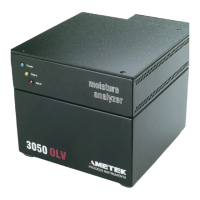Essential Health and Safety Requirements | 55
Maintenance and Troubleshooting
Generally, there is limited maintenance required to ensure the analyzer
remains operating at peak efficiency, other than that described in the
“Analyzer Preventive Maintenance Schedule” [located in the Maintenance
and Troubleshooting chapter of the analyzer User Manual]. This section
discusses preventive maintenance that must be followed to ensure con-
tinued and proper operation of the analyzer. This section also describes
parts that require replacing and the frequency in which they should be
replaced, according to this schedule. [Refer to other sections in the Main-
tenance and Troubleshooting chapter of the analyzer User Manual for
procedures to replace the parts.]
Before Performing Maintenance
Under normal operating conditions, lethal concentrations of H
2
S
or other toxic gases/liquids from the sample stream may be present
within the analyzer sample system.
Before working on the sample system, manually Zero the analyzer
(from the Calibration screen, select Start zero calibration and press
ENTER), isolate it (block it in) from the sample stream, and disconnect
the main AC power. This procedure is necessary prior to changing out
any analyzer components or replacing any replaceable parts (as part
of regular preventive maintenance), or performing leak checks follow-
ing the replacement of instrument air or other adjustments to any of
the connections points in the analyzer sample system. If this is not
possible, a breathing apparatus must be worn while servicing
the sample system.
The sample system is defined as all components in the analyzer sys-
tem through which sample fluid passes.
Certain procedures, such as replacing source lamps, do not require that
the analyzer sampling system be isolated from the sample gas stream. Ad-
justments to the source lamps must be done with the analyzer powered
up. [These procedures can be found in the Troubleshooting and Mainte-
nance chapter of the analyzer User Manual.]
You must take precautions against ESD (electrostatic discharge) dam-
age while performing the following operations. Precautions would
include the use of a wrist strap and a grounded work surface, as well
as storage of electronic assemblies in anti-static packaging.
!
WARNING
!
CAUTION

